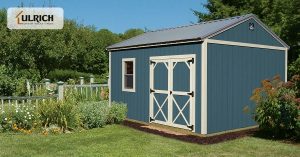
When it comes to the interior design of your home, paying attention to details can make a world of difference. Imagine walking into a house with a beautifully laid engineered oak flooring, only to step onto the staircase where sleek timber stair nosing takes the elegance to new heights. Exciting, isn’t it? In this short-form content, we’ll explore how engineered oak flooring and timber stair nosing can work harmoniously, not just for aesthetic value, but also for enhanced durability and safety.
Benefits of Engineered Oak Flooring
The popularity of engineered oak flooring continues to grow, and for good reason. It’s valued for its durability, vast design options, easy installation, and cost-effectiveness. Unlike traditional solid wood flooring, engineered oak is a layered product made of real wood veneer on top, coupled with a stable plywood base. Its construction allows for a more versatile application.
Durability and Strength
Engineered oak can withstand fluctuations in temperature and humidity, making it a practical choice for various living spaces, including kitchens and bathrooms. The multiple layers enable it to be more dimensionally stable than solid wood, reducing the risk of warping or bowing. This stability ensures your flooring looks as good as new for years to come.
Wide Range of Design Options
From different stains and finishes to unique plank sizes and textures, engineered oak offers the same aesthetic benefits as solid wood flooring but with a broader range of design options. Whether you’re going for a sleek, modern look or a rustic charm, you’ll find an engineered oak solution to suit your tastes.
Easy Installation and Maintenance
Engineered oak flooring is designed to be installed over many different surfaces, including concrete, making it a versatile option for home renovations. Maintenance is as simple as regular sweeping and occasional mopping, making it a convenient choice for busy homeowners.
Cost-Effectiveness
While the upfront cost may be slightly higher than some other flooring options, the longevity and low maintenance requirements make engineered oak a cost-effective choice in the long run.
Importance of Timber Stair Nosing
Stair nosing is an often-overlooked yet critical component of any staircase. It refers to the protruding edge of a step that provides a distinct visual identification of the top of a stair, enhancing safety.
Why Timber Stair Nosing Matters
Stair nosing may seem like a small detail, but it serves big functions. It protects the stair edge from wear and is a crucial safety feature. It also adds to the overall aesthetic appeal, giving the stairs a finished, polished look.
Safety Features and Protection for Stairs
Stair nosings, particularly those made of timber, provide a tactile indication to the beginning and end of the stairs, helping prevent accidental falls. By bridging the exposed end of a stair, nosing also helps prevent impact damage to the staircase from heavy foot traffic or moving equipment.
The Perfect Combination
When you pair engineered oak flooring with timber stair nosing, you blend two elements that are not just visually appealing but also offer superior functionality.
Aesthetics and Design Cohesion
The continuity in design from the flooring to the staircase is aesthetically pleasing and adds a sense of flow to the space. The warm, natural tones of the wood create a welcoming atmosphere in any home.
Enhanced Durability and Protection for Stairs
The tough, durable surface of engineered oak flooring provides reliable protection for the steps against scratching and scuffing. Meanwhile, the robust timber used for stair nosing not only withstands daily wear and tear but also complements the overall look of the stairs.
Installation and Maintenance Tips
To maintain your engineered oak flooring and timber stair nosing, it’s essential to follow proper installation and maintenance procedures.
Step-by-Step Guide for Installation
For novice DIYers or those with experience, a guide to installing engineered timber stair nosing can ensure a smooth process. Remember to leave adequate expansion gaps and use the manufacturer’s recommended glues or adhesives. Stair nosing installation requires precision, so take your time to measure and cut each piece accurately.
Prolonging the Lifespan
Simple maintenance routines, such as regularly cleaning with recommended products and promptly addressing any spills or scratches, can significantly extend the life of your engineered oak flooring and timber stair nosing. Avoid using harsh chemicals or abrasive cleaning tools that can damage the finish.
Conclusion
The combination of engineered oak flooring and timber stair nosing is more than just a design decision—it’s a practical choice for creating a cohesive, sophisticated home interior. With the durability, safety, and elegance they offer, these two elements can elevate the look of any space. Whether you’re renovating or building from the ground up, consider this dynamic duo for your flooring and staircase needs.

